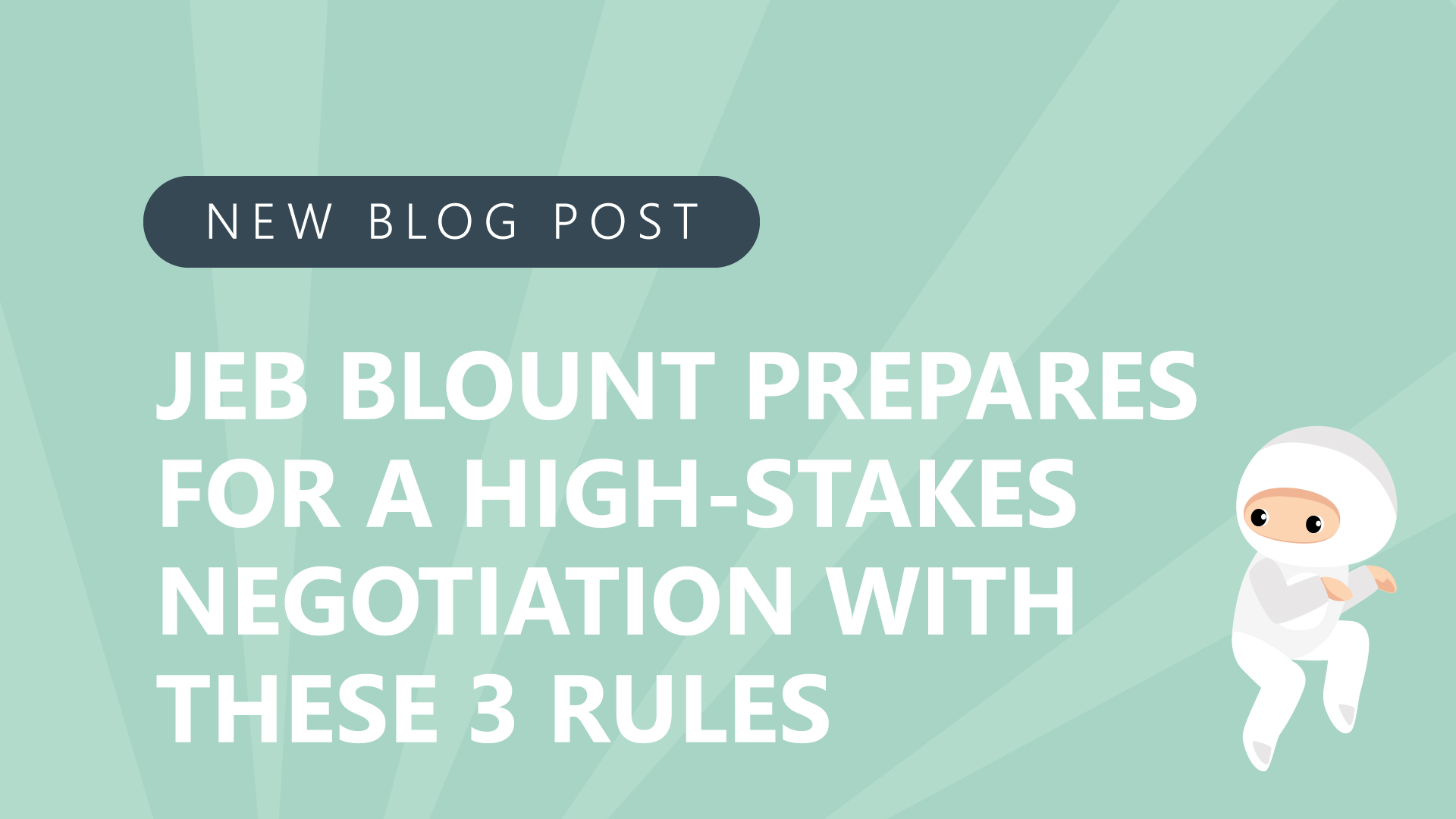In a special episode swap with the Sales Reinvented podcast, Jeb Blount points out that if you don’t know how to negotiate, you won’t make a profit. You’ll just be giving things away. Jeb wrote his book “Inked” as a sales negotiation book. If you don’t negotiate well, you’re essentially giving away your paycheck and company profit.
How does Jeb Blount prepare for a high-stakes negotiation? Jeb embraces a few rules as part of his negotiation process:
Rule #1: Don’t negotiate until you’ve already won the deal
Jeb notes that this can be difficult for most people to understand at first. But until you’re selected as the vendor of choice, you’re just negotiating with yourself. He won’t negotiate until the prospect has made the decision to negotiate with him—or you’re just giving away power.
Rule #2: Leverage the negotiation triangle
High-stakes usually means complex, right? Jeb always works to make sure he’s developed a great relationship with someone in the stakeholder group (usually an executive sponsor). If you’re in a high-stakes deal, you typically deal with a lawyer or procurement group. The stakeholder often selects you as the vendor of choice—but then shoves you off to procurement.
Procurement’s goal is to get you to lower your prices. It’s difficult to negotiate with them because their job is to win for their company. They don’t care if you get the deal or not. But if you have a stakeholder to reach out to, you can leverage that relationship to move beyond an impasse.
Rule #3: Incorporate a give-take playlist
Jeb points out that there comes a point in every high-stakes negotiation where you have to give something. But you should never give without taking something in return. He emphasizes that “I want to be able to give things to the buyer that are low-value to me but high-value to the buyer—while I take things away from the buyer that are high-value to them.” The more you take that is of value to them, the more painful the negotiation process becomes. The goal is to compel them to stop negotiating and align on a deal. How do you create that give-take playlist?
Scenario planning
If your counterpart says, “We need you to drop your price by 10% on this,” he can say, “I’ll drop my price by 10%, but that means I can’t provide up-front training for you for free. I’ll have to add that in at cost per person.” If that training was important to them, they’ll balk at that suggestion.
If you’ve done the sales process correctly and you have stakeholder consensus on what they want in the deal to help them achieve outcomes, you should know what’s important to them. Jeb’s strategy is to start to remove those important things the stakeholder group wanted. It makes it more painful for them. As he pulls things out, they move back toward him.
Analyze the metrics
Lastly, he does the math upfront. When he’s creating a value bridge from his business proposal to his price, he needs to know the metrics. If it’s too expensive for them, he needs to be able to show them the difference between “expensive” (a price issue) and total cost of ownership (how much it costs to run the program).
He wants to make sure he’s selected as the vendor, has a give-take playlist, understands the consensus of what the stakeholders want, and uses his calculator to show them the value of price. To hear more of Jeb’s thoughts on high-stakes negotiation, listen to episode #203 of the Negotiations Ninja podcast!

